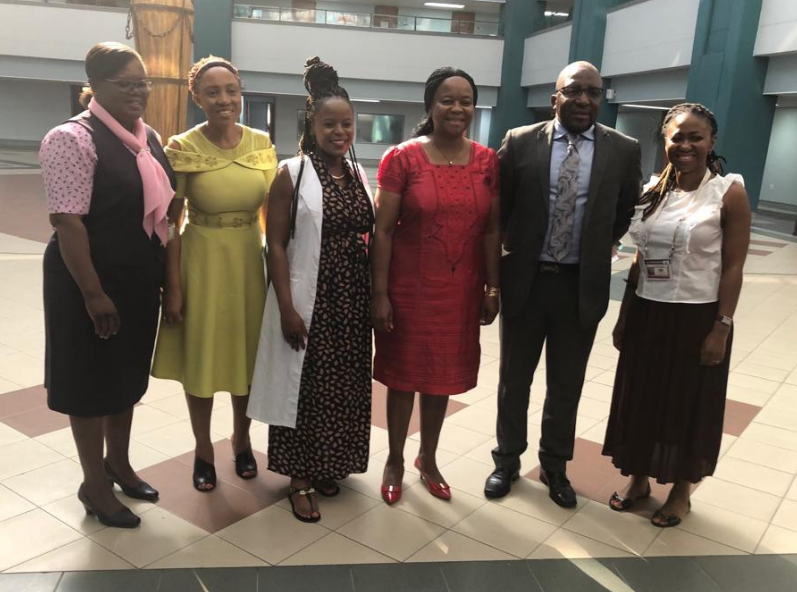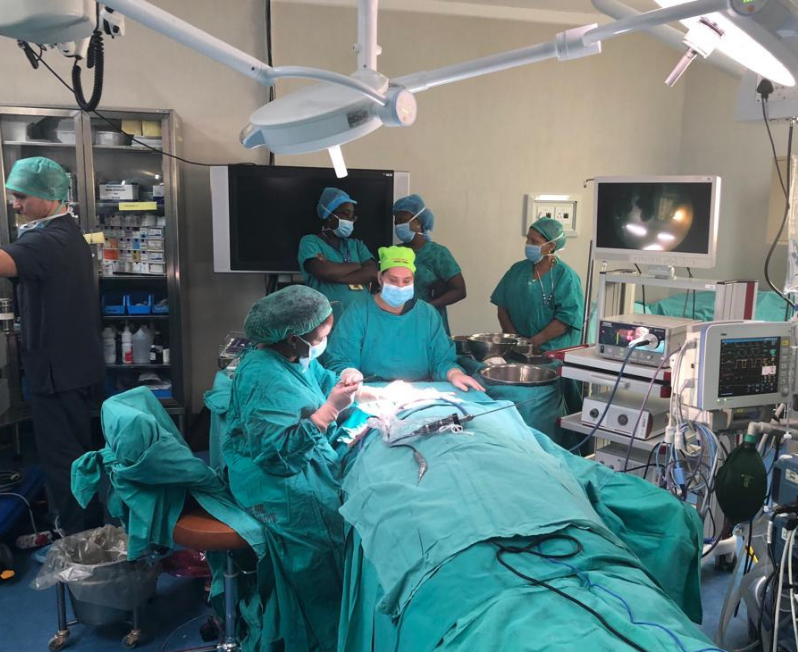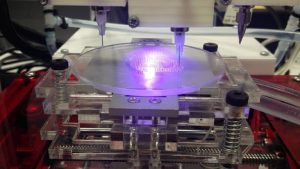Mashudu Tshifularo, a South African doctor, and his medical team became the first in the world to claim to cure a 35-year-old patient’s deafness by using 3D printing technology. Tshifularo, who is also a professor at the University of Pretoria Faculty of Health Sciences, was able to replace the damaged bones of the patient’s ear by recreating the anvil, hammer, stirrup, and ossicles, which make up the inner ear, with similarly-shaped titanium pieces produced on a 3D printer.
The University of Pretoria believes that the procedure “may be the answer to conductive hearing loss, a middle ear problem caused by congenital birth defects, infection, trauma or metabolic diseases.”
The groundbreaking surgery was performed at Steve Biko Academic Hospital, where the patient, who had lost his hearing due to a car accident, unfortunately damaged the inside of his ear. However, thanks to the surgeons, the surgery that took less than two hours, and the team purports to have restored his hearing successfully.
“By replacing only the ossicles that aren’t functioning properly, the procedure carries significantly less risk than known prostheses and their associated surgical procedures. We will use titanium for this procedure, which is biocompatible. We use an endoscope to do the replacement, so the transplant is expected to be quick, with minimal scarring,” Tshifularo explained.
Tshifularo believes that this innovative technique will be the answer to all of those patients suffering from hearing loss regardless of their age.
“The patients will get their hearing back immediately but since they will be wrapped in bandages, only after two weeks, when they are removed, will they be able to tell the difference,” Tshifularo added.
According to the South African Hearing Institute, hearing naturally declines from age 30 or 40. Hearing loss could be attributed to many factors: ageing, diseases, infections, or one can inherit the condition or can ruin their hearing after physical damage to the ears or head.
The University of Pretoria and Tshifularo are looking for partners and funding to standardize the procedure of 3D printed middle ear transplants.
As Tshifularo said: “3D technology is allowing us to do things we never thought we could, but I need sponsors and funding for this invention to take off the ground.”
Tshifularo grew up as a herdsman in the village of Mbahela outside Thohoyandou, in Venda, and has faced many financial challenges in furthering his education, but that didn’t stop him from reaching his dream. Although he has been spending the last ten years studying conductive hearing loss and he is now busy with his second PhD degree at the University of Pretoria, in the last two years he started looking into the use of 3D printing technology.
Tshifularo passed all his degrees within five years because, as he stated, he was focused.
“People like me never arrive. After climbing one mountain we want to climb another one. If I was easily satisfied I would have never achieved all the breakthroughs in my life,” Tshifularo added.
A similar groundbreaking procedure was performed in 1967 when South Africa claimed to be the first to perform a heart transplant thanks to Dr. Christiaan Barnard. Today, they are the first to perform an ear transplant by using 3D technology thanks to Professor Mashudu Tshifularo.
3D printers have proved to be extremely useful and needed in the medical industry. In Australia, for example, a 3D bioprinter called 3D Alek was developed to create replicas of the human ear for reconstructive surgery, especially for patients who suffer microtia.
On the other side of the world, in the United States, a company named Organovo has been using their NovoGen Bioprinter to develop liver tissues to delay or reduce the need for a transplant. Organovo’s goal is to be able to build living human tissues that are proven to function like native tissues, “with reproducible 3D tissues that accurately represent human biology.”
Sources: News Max, The Epoch Times, Sowetan Live, Cape Town Etc.
Subscribe to Our Email Newsletter
Stay up-to-date on all the latest news from the 3D printing industry and receive information and offers from third party vendors.
Print Services
Upload your 3D Models and get them printed quickly and efficiently.
You May Also Like
The Market and Industry Potential of Multi-Material 3D and 4D Printing in Additive Electronics
Additive manufacturing leverages computer-based software to create components for products by depositing either dielectric or conductive materials, layer by layer, into different geometric shapes. Since its birth in the 1980s,...
3DPOD 262: Bio-inspired Design for AM with Dhruv Bhate, Arizona State University
Dhruv Bhate is an associate professor at Arizona State University. There, he looks at structures, materials, and design. Previously, he worked at PADT as well as in the semiconductor and...
3DPOD 261: Tooling and Cooling for AM with Jason Murphy, NXC MFG
Jason Murphy´s NXC MFG (Next Chapter Manufacturing) is not a generalist service; instead, the company specializes in making tooling. Using LPBF and binder jet, the company produces some of the...
3DPOD 260: John Hart on VulcanForms, MIT, Desktop Metal and More
John Hart is a Professor at MIT; he´s also the director of the Laboratory for Manufacturing and Productivity as well as the director of the Center for Advanced Production Technologies....





































